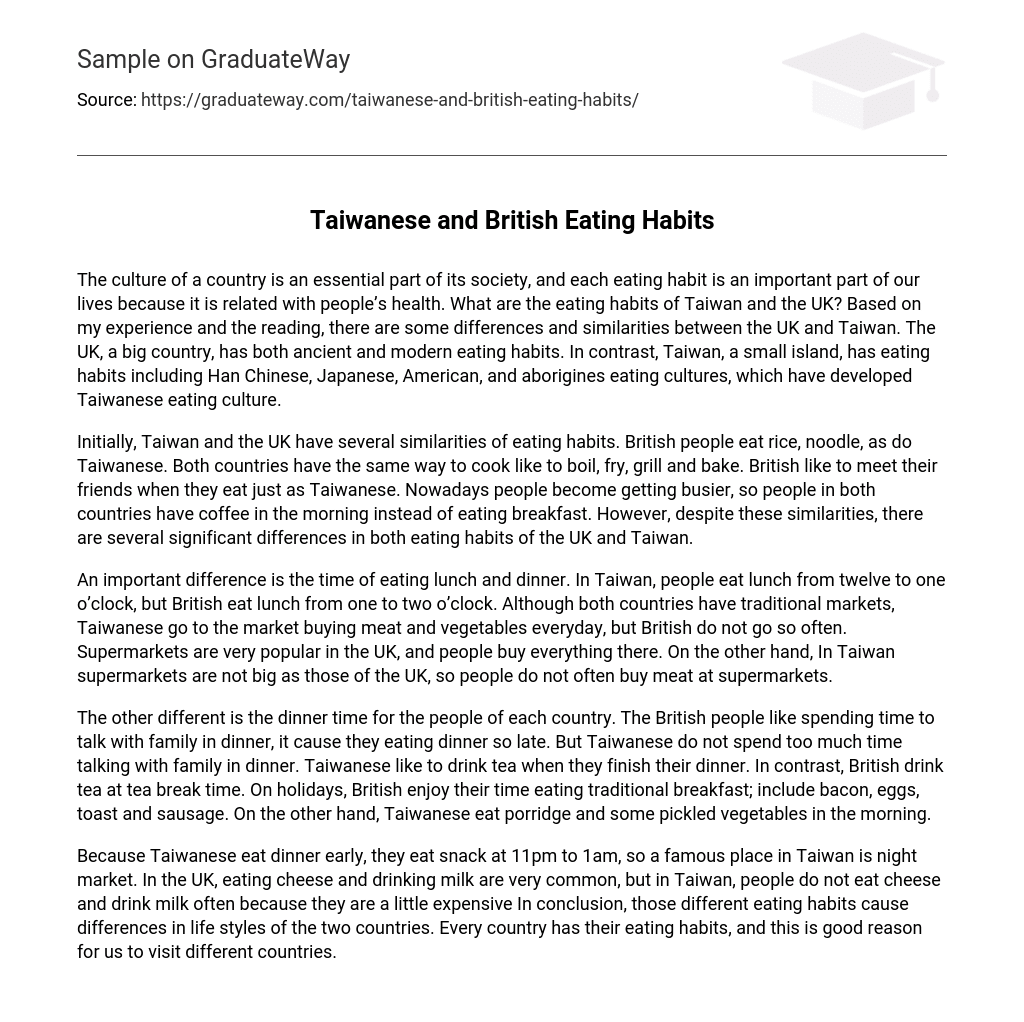The eating habits and culture in Taiwan and the UK exhibit both similarities and differences. Despite its small size, Taiwan has a diverse food culture influenced by Han Chinese, Japanese, American, and aboriginal traditions. Conversely, the UK’s larger size allows for a blend of traditional and modern eating practices. The various cultural influences present in Taiwan have played a significant role in shaping its unique culinary landscape.
Both Taiwan and the UK share similarities in their eating habits. The British, similar to the Taiwanese, consume rice and noodles. Both countries employ cooking techniques like boiling, frying, grilling, and baking. Furthermore, both cultures appreciate socializing with friends during meals. However, due to busy schedules, people in both nations have started replacing breakfast with coffee. Despite these resemblances, there are variations in the eating customs of the UK and Taiwan.
The lunch and dinner times in Taiwan and the UK vary. In Taiwan, lunch is usually eaten from twelve to one o’clock, while in Britain it is consumed from one to two o’clock. Despite both countries having traditional markets, Taiwanese people go to the market every day to buy meat and vegetables, unlike their British counterparts who visit less often. Supermarkets are popular in the UK where people purchase various products. Conversely, supermarkets in Taiwan are smaller compared to those in the UK, leading to less frequent buying of meat.
The difference between the two countries lies in their dinner habits. British people, who prioritize family conversation, have dinner late. Taiwanese people, on the other hand, do not spend as much time talking during dinner and instead enjoy tea afterwards. British people also drink tea during tea break time while Taiwanese people typically have porridge and pickled vegetables in the morning. Additionally, on holidays, British people indulge in a traditional breakfast consisting of bacon, eggs, toast, and sausage.
Because Taiwanese people prefer to have early dinners, they frequently enjoy snacks between 11pm and 1am, leading to the popularity of night markets in Taiwan. In contrast, cheese and milk consumption is more common in the UK compared to Taiwan due to their higher cost. These different eating habits contribute to variations in the lifestyles of both countries. Exploring different cultures becomes even more interesting when considering these unique eating habits.





